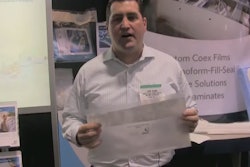Early in the sustainability era, we frequently heard that global warming was slowly but measurably melting polar ice. In more recent times, references to global warming have waned. Now we hear more about climate change, the theory that extreme weather is occurring with increased frequency from man-made causes. The variety of extreme weather ranges—literally—from wet to dry and from hot to cold. At the time of this writing, wide swaths of the U.S. have been punished by a relentless winter of record snowfall and arctic temperatures. Preceding summers have been marked with periods wherein populations baked in 3-digit temperatures. Other areas of the country continue to grapple with record draught. And lately, hurricane and tornado seasons, while never welcomed times, have swept through with particular intensities.
Since the onset of the sustainability era, consumer packaged goods (CPG) companies have been making promotional claims about sustainable packaging; however, of the various stakeholders at whom such claims are aimed, the least impressed have been consumers. Sustainable packaging is not among the top influencers of purchase decisions. It's not that consumers are opposed to the notion of sustainable packaging but that they (for the most part) are not willing to sacrifice for it in terms of pricing, performance, and convenience.
Although increased sales hasn't necessarily been one of them, there consistently have been two excellent reasons for CPG companies to embrace sustainable packaging: 1) avoiding a competitive disadvantage (in other words, the absence of sustainable packaging claims can cause a brand to lose sales to a competitor that makes claims, all other things being equal); and 2) sustainable packaging can contribute to the bottom line, for example, by reducing transportation costs through lightweighting (assuming a systematic accounting, such as life-cycle assessment).
What's important is not whether climate change is real—and it's not this article's intent to advocate, one way or the other—but that it's the subject of wide debate, one that's reignited with every notable occurrence of weather. An occurrence of extreme weather can affect untold numbers of people, and repeated occurrences can raise the average consciousness with which consumers link climate change to their quality of life, today and in the future. Over time, the ranks of the true believers are bound to increase and their clamor for remedial change likely will be joined by some who are less convinced of the reality of climate change but who reason, "Why take the chance?"
The debate over climate change might change the importance that consumers assign to sustainable packaging, ultimately to the point where sustainable packaging becomes a major influence on purchase decisions. Imagine a future where consumers evaluate sustainable packaging claims with the same scrutiny afforded to nutrition labeling, warnings, and package instructions. Imagine products being either placed in the shopping cart or returned to the shelf based on these evaluations. In such a scenario, sustainable packaging makes its impact at the brand level, either building or weakening the brand. That very possibility is reason for a CPG company to ask itself whether its present approach to sustainable packaging is best suited to meet the related opportunities and challenges. If the answer is no, then how should the approach be revised?
Take, for example, plastic packaging, long criticized for being derived from a nonrenewal resource and for being all too present in landfills (among other criticisms). Despite that, many (if not most) plastic packages carry no sustainability claims. Yet consumers continue to purchase products packaged in plastic, no doubt for conveniences such as lightweight, clarity, and shatter resistance. But what if there comes a time, quickened by concerns about climate change, when consumers demand the same conveniences AND convincing claims of sustainability?
That's a landscape that should be recognized as the minefield it is. In any competition, strategy and execution are of paramount importance. Continuing with the example of plastic packaging, lightweighting and the use of recycled content are inherently subject to diminishing returns; worded differently, there's a practical limit, after which, problems-technical and others-are encountered. How-low-can-you-go, while a good mindset for a limbo dance contest, is far less suitable for sustainable packaging. The reason is that a competitive advantage is only as good as the ease with which it can be met or bested by the competition. A competitive advantage, itself, should be sustainable.
Toward that end, rather than practically conceding plastic's inherent unsustainability, why not tout plastic's sustainability bona fides-on the labeling, itself. Such a strategy—if presented factually, credibly, and engagingly—can work, especially if executed by an impressive number and variety of CPG companies.
As for those CPG companies with a stake in bioplastics and related claims of biodegradability and compostability, changes in consumer attitudes wrought by climate change won't automatically prove beneficial. Those companies should be proactive and strategize about how to shore up the various shortcomings of bioplastics. Companies that take such advice lightly have not learned the lessons contained in examples such as the highly-chronicled failed launch of the Frito-Lay's Sun Chips compostable bag.
Companies that package in materials other than conventional plastics and bioplastics should have no difficulty recognizing that the foregoing paragraphs hold relevance for them, too. The message to CPG companies of every stripe is that climate change has the potential to usher in different ground rules. Those ground rules are the winds of change. Granted, they aren't moving at gale force speed; nonetheless, they are out there, building, their approach worthy of being charted. Weather forecasting and business forecasting share the same purpose: to grant those in the path of what's coming (whether good or bad) adequate time to prepare.


























